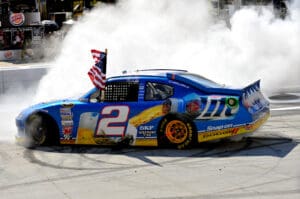
Imagine you are witnessing a crime or facing a life-threatening situation where making a voice call to 911 could further endanger your safety. You need to reach 911 emergency responders, but an audible call could alert a would-be assailant. What can you do to summon help fast?
You reach for your cell phone and send an instant – and silent – text message to 911 responders who quickly arrive to help you and remove you from harm’s way.
This scenario will soon become a more common reality. Limited tests of text-to-911 in Iowa, North Carolina and Vermont have seen lives saved, an attempted suicide averted and domestic abuse prevented.
And, by May 15, 2014 —following actions by the Federal Communications Commission and the wireless industry this week —text-to-911 will become much more widely available to millions of Americans.
In most cases, 911 cannot be reached today by sending a text message, and text-to-911 will be a complement to, not a substitute for, voice calls to 911 services. Consumers should always make a voice call to 911 during an emergency if they can.
However, the rollout of such a service will greatly widen the accessibility of 911 for all Americans, including millions with disabilities. And today, the FCC has taken an unprecedented step toward making text-to-911 available across America.
For the first time, we are proposing specific requirements and timeframes that will add text capability to the 911 system. This marks the first major milestone in the country’s migration towards Next-Generation 911.
The actions build on months of Commission work, as well as efforts initiated by industry and the public safety community, such as the voluntary agreement approved this past week.
Under its terms, the nation’s four largest wireless carriers - AT&T, Verizon Wireless, Sprint and T-Mobile - have agreed to accelerate the availability of text-to-911 to local 911 call centers (known as Public Safety Answering Points or PSAPs) that request service. Major deployments are expected in 2013, and the agreement includes a commitment to provide nationwide availability by May 15, 2014.
The agreement will accelerate progress and ensure that over 90 percent of the nation’s wireless consumers, including consumers with hearing or speech disabilities, will be able to access emergency services by sending a text message to 911, where local 911 call centers are also prepared to receive the texts.
To help eliminate consumer confusion while this capability is being phased-in, the carriers have committed to provide an automatic “bounce back” text message to notify consumers if their attempt to reach 911 via text message fails because the service is not available in their area.
If approved, the actions we have taken would require all wireless carriers, as well as providers of certain Internet-based text messaging applications - those that send messages to telephone numbers, but not, for example, messages within games and social media - to enable their customers to send text messages to 911 where PSAPs are prepared to receive such messages.
We will also take additional steps to address other aspects of Next Generation 911 in the coming year - such as enabling transmission of photos and videos to 911 centers - to ensure we meet the nation’s public safety needs.
For further information and updates on text-to-911, please see www.fcc.gov/text-to-911.
By Julius Genachowski

















